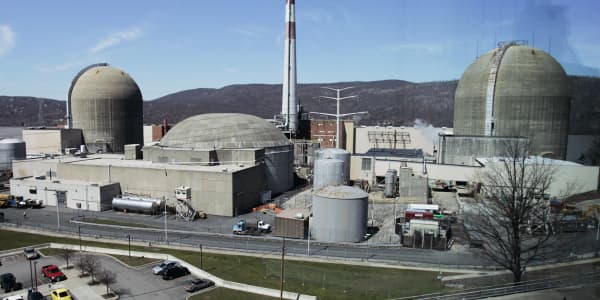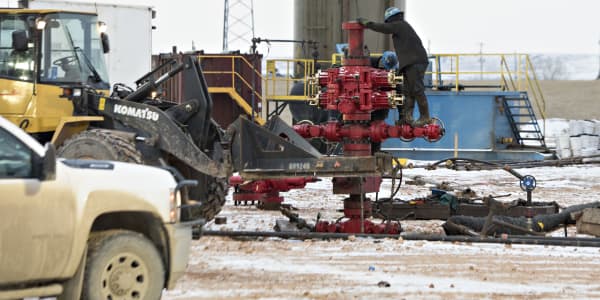In the ultra-low interest rate environment since the financial crisis, junk bonds have been a favorite place to find more yield. Not anymore.
Investors are bailing out of high-yield bond funds as the global economic picture deteriorates. Prices of speculative grade debt—bonds rated BB/Ba or less—have fallen along with stocks as worries about China, the Eurozone and global economic growth intensify.
"Spreads are widening across all sectors of the market in response to the heightened uncertainty of the economic outlook," said Jon Lonski, chief markets economist at Moody's Analytics. "There's a reduced expectation for business activity."
More than $8 billion has poured out of the nearly 200 high-yield mutual and exchange-traded funds tracked by Lipper over for the last three months. While high-yield bond ETFs actually took in money last week despite poor performance, outflows are likely to continue. "With all that's going on in the stock market, it's no surprise we're seeing volatility in high yield bonds," said Jeff Tjornehoj, head of Americas Research at Lipper. "There have been outflows from the sector in nine of the last 10 weeks. Investors have been shying away from high yield bonds for much of this year."
Read MoreThe junk bond market is having a coronary
The biggest reason for weakness in junk bonds has been the crash of commodities markets—most notably crude oil. The energy sector accounts for about 15 percent of junk bond issuance and almost as much comes from companies in the metals and mining sector where commodity prices are also collapsing.
While the overall yield spread between the BofA Merill Lynch US High Yield Master II Total Return Index Value and comparable duration Treasury bonds has now risen above 6 percent, spreads in both those industries have now topped 10 percent, according to figures from Moody's Analytics.
Source: BofAmerica Merrill Lynch and Lipper
"Where is world macroeconomic demand," asked Neha Khoda, a high-yield bond analyst with Bank of America Merrill Lynch. "We need some stability in oil and global economies to see a tapering of spreads on junk bonds."
Oil and industrial metal prices aren't Khoda's only worry. As volatility across asset classes has ramped up, the risk profile of junk bonds as a whole has also gotten worse. "The risk of contagion has increased," said Khoda. BofA Merrill Lynch has been underweight on high-yield bonds of energy issuers since 2013 and underweight the entire sector since the middle of last year. "Weakness in energy and materials could seep into the non-commodity part of the market because of risk aversion. The chances of that happening clearly increased last week."
Read MoreIs it time to get out of junk bonds?
So far, the BofA Merill Lynch US High Yield index has dropped from a peak of 1091 this year at the end of May to 1042 on Aug. 25. Yields have risen from under 6 percent in late April to 7.53 percent and the spread with comparable duration Treasury bonds has increased from 3.35 percent in June last year to 5.90 percent—above historical averages.
The risk of contagion has increased.Neha KhodaHIgh-yield bond analyst, BofA Merrill Lynch
Is there a buying opportunity in high yield bonds? If the worries about the global economy subside, so will volatility and junk bond yields. Of the 199 high-yield bond funds tracked by Lipper, 179 of them are actively managed, and fund managers earn their stripes by finding oversold opportunities.
The credit performance of the sector continues to be good. The trailing 12 month default rate for global speculative bonds was just 2.4 percent at the end of July versus a historical average of 4.5 percent since 1983. Investors who took a similar risk in 2011, were handsomely rewarded. High yield spreads ballooned out to 9 percent in October 2011 on fears about the Eurozone and the credit rating downgrade of the U.S. government, and over the next three years, they narrowed by nearly 6 percent.
This time around, however, the trends on fundamentals and credit performance are working against the market, said Lonski. Moody's is expecting the default rate to rise from here—predominantly due to distressed energy and commodity-related issuers. The general increase in market volatility will also hurt every other non-investment grade company.
"The argument for high-yield bonds looks less compelling today than it was in 2011 when default rates were expected to decline," said Lonski. "The risk/reward doesn't seem as attractive now."
Investors may still be hungry for yield, but they probably shouldn't going looking for it in the junk bond market. "Fundamentals and cash-flow liquidity will take center stage now," Khoda said. "The reach for yield will unwind from here."




